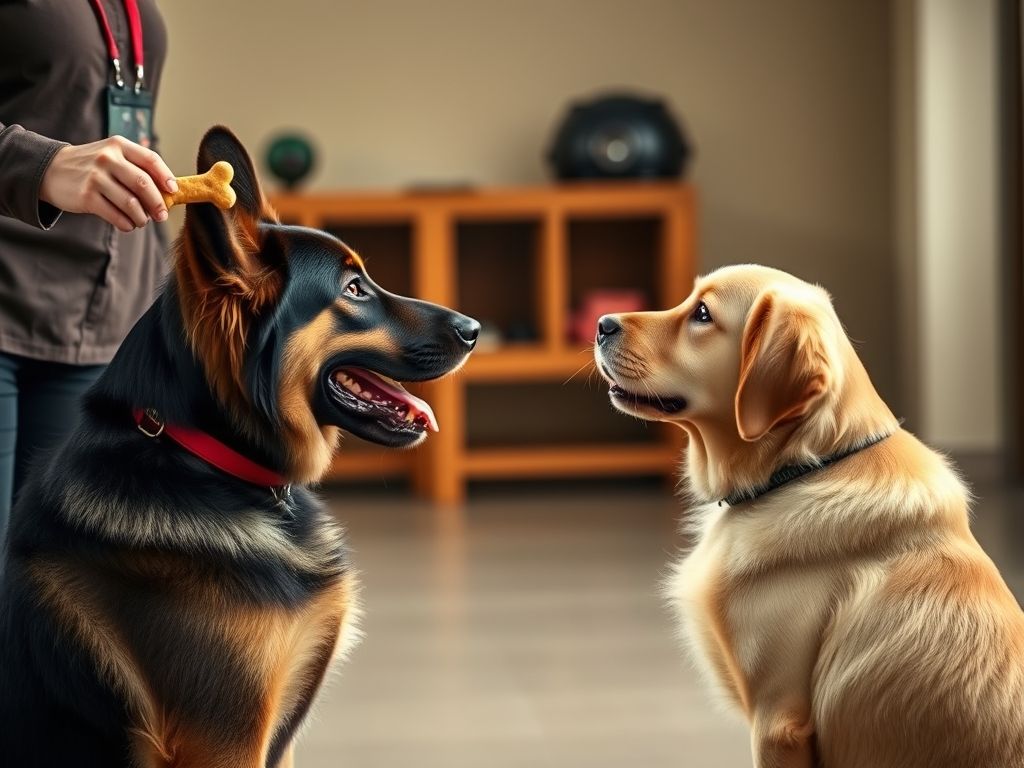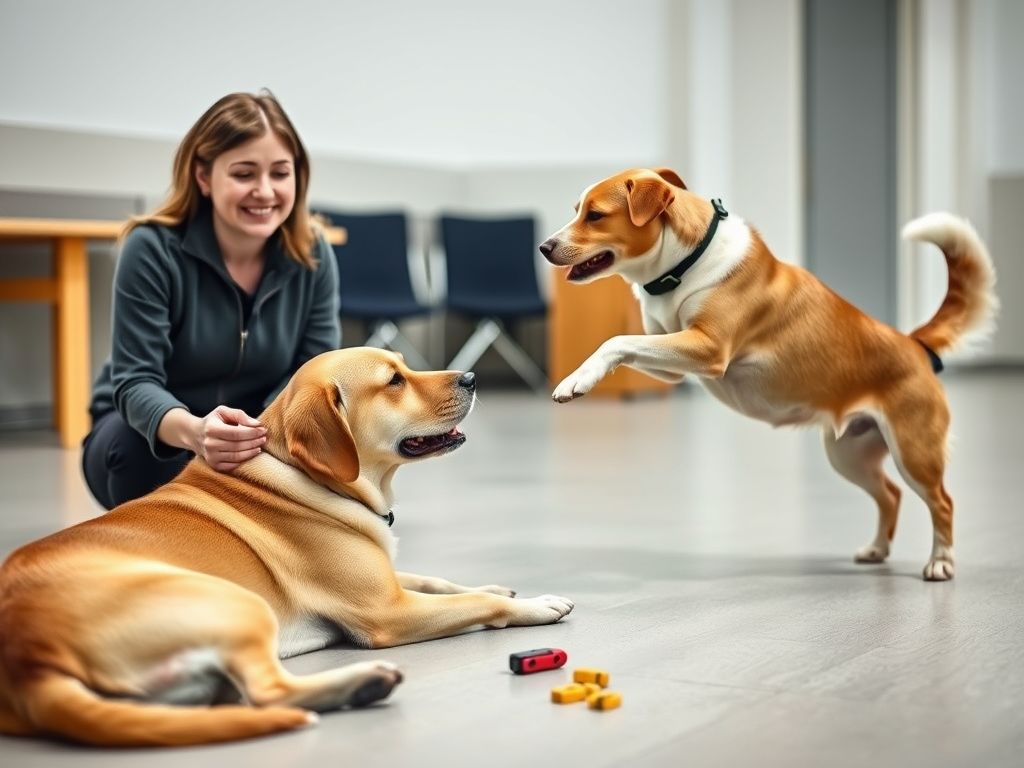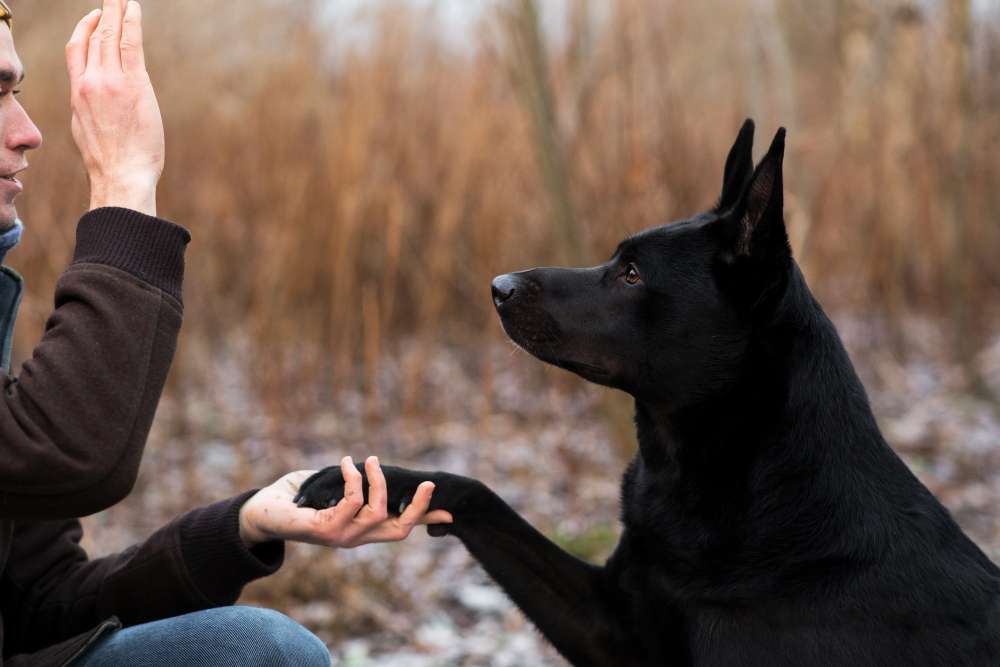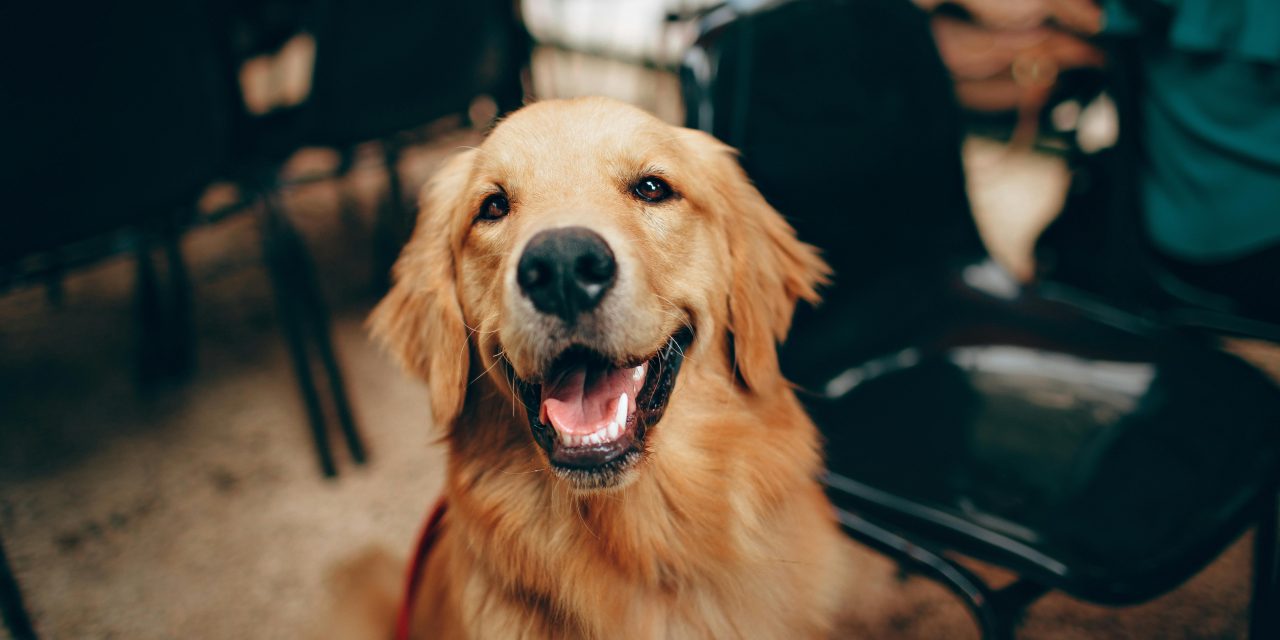Having a well-behaved dog is every pet owner’s dream. But let’s face it, even the cutest pups can have some not-so-cute habits. Whether it’s chewing shoes, barking at the mailman, or ignoring commands, behaviour problems can become frustrating. The good news? With the right training techniques, any dog can learn to behave better.
1. Model-Rival Training Method

The Model-Rival Training Method, also known as observational learning, leverages a dog’s ability to learn by watching others.
In this technique, a trainer or another dog acts as a “model” to demonstrate the desired behaviour, while a “rival” (often the trainer or another dog) competes for the reward.
For example, if teaching a dog to sit, the trainer might have another dog perform the command correctly to earn a treat, prompting the trainee dog to mimic the action. This method works well for dogs that are highly social and observant, encouraging them to learn through competition and imitation.
2. Electronic Dog Training Method
The Electronic Dog Training Method uses devices like e-collars to deliver mild electrical stimulation, vibrations, or sounds to correct unwanted behaviours. When used correctly by a professional, this method can be effective for behaviours like excessive barking or straying too far during off-leash activities.
However, it requires careful calibration to avoid distress, and consultation with experts.Misuse can lead to fear or aggression, so this method is best reserved for experienced trainers.
3. Classical Conditioning Method
The Classical Conditioning approach is what Pavlov is known for. It involves associating a neutral stimulus with a reflexive response in the conditioning of behaviour.
For instance, if a bell is rung before feeding, the dog eventually associates the bell with mealtime and hence salivates.
This method can be very effective in establishing positive associations like relating a crate to treats and comfort which helps to reduce anxiety related to confinement.
It is a soft method that earns faith and suits well for dealing with anxiety-related actions or bringing in new surroundings
4. Operant Conditioning Method

Operant Conditioning focuses on consequences to shape behaviour, using rewards and punishments. Dogs learn that specific actions lead to positive (treats, praise) or negative (time-outs, verbal corrections) outcomes.
For instance, rewarding a dog for lying down reinforces calm behaviour, while ignoring jumping discourages it.
This method is versatile and effective for teaching commands like “stay” or “come,” as it clearly connects actions to outcomes, helping dogs understand expectations.
5. Traditional Dog Training
The Traditional or Dominance-Based Dog Training essentially makes the owner establish himself as the ‘alpha’ by giving firm commands and corrections.
This could be in the form of leash corrections or verbal reprimands to discourage behaviours.
This method proved effective for some dogs. However, it uses intimidation and may strain the human-dog bond. Modern positive trainers owe their origins to that old-school negative-based training but they unleash it only in those particular cases where dogs demand strict discipline-work dogs.
6. Positive Reinforcement Method

One of the trendiest and humane training techniques is Positive Reinforcement. It consists of rewarding the animal with food, caresses, or play when it performs the behaviour that is requested to be repeated, inviting it to repeat it.
For instance, providing the dog with a treat upon sitting when asked will only serve to reinforce this particular behaviour. Such a technique is very convenient for teaching new commands and creates energy since during the training dogs learn that it is a time of playing and getting gifts.
Ideal for all breeds and ages. Strengthening a strong, trust-based relationship.
Examples of Positive Reinforcement:
| Action | Reward |
| Sitting on command | Small treat + “Good boy/girl!” |
| Staying in place | Head pat + affectionate tone |
| Coming when called | Favourite toy or snack |
7. Negative Reinforcement Method
Negative Reinforcement involves removing an unpleasant stimulus from a dog when he performs a desired behaviour to encourage its repetition. For example, applying slight leash pressure and removing it when the dog walks correctly is a way of teaching good leash manners.
Negative reinforcement or encouraging compliance by removing discomfort rather than through its addition or its punishment is one such technique that is to be carefully used so as not to create confusion and is mostly used in conjunction with positive reinforcement to get the best results.
8. Obedience Training
Obedience training is the foundation of a well-behaved dog. It focuses on teaching essential commands like “sit,” “stay,” “come,” and “down”—making daily life safer and more enjoyable for both you and your pup. These skills help prevent problematic behaviour and ensure your dog responds reliably in different situations.
Steps to Get Started:
- Keep early sessions short and fun to hold your dog’s attention.
- Use positive reinforcement like treats, praise, or toys to reward good behaviour.
- Practice in various environments—backyard, living room, or park—to build focus despite distractions.
- Gradually increase the length and complexity of each command to strengthen consistency.
Core Commands to Begin With:
- Sit
- Stay
- Come
- Leave it
With consistency and encouragement, obedience training builds a strong communication channel between you and your dog.
Choosing the Right Method
Selecting the best training technique depends on your dog’s personality, behaviour issues, and your training goals. Positive Reinforcement and Classical Conditioning are great starting points for most dogs due to their gentle, trust-building nature.
For complex issues, consulting professionals through a veterinary jobs platform can connect you with certified trainers or behaviourists who tailor methods to your dog’s needs. Always prioritize humane techniques and consistency to ensure long-term success.
Tips for Effective Training
- Be Consistent: Use the same commands and rewards to avoid confusion.
- Keep Sessions Short: Train for 5-10 minutes to maintain focus.
- Stay Patient: Progress takes time, especially with complex behaviours.
- Know Your Dog: Observe what motivates your dog, whether it’s treats, toys, or praise.
Learn and apply these seven training techniques, transform your dog’s behaviour with the right approach, and enhance the bond between you and your furry friend. Basic commands or correction of problem behaviours: It all comes down to the right approach to doing the most effective job of creating a happy and well-mannered companion.

























